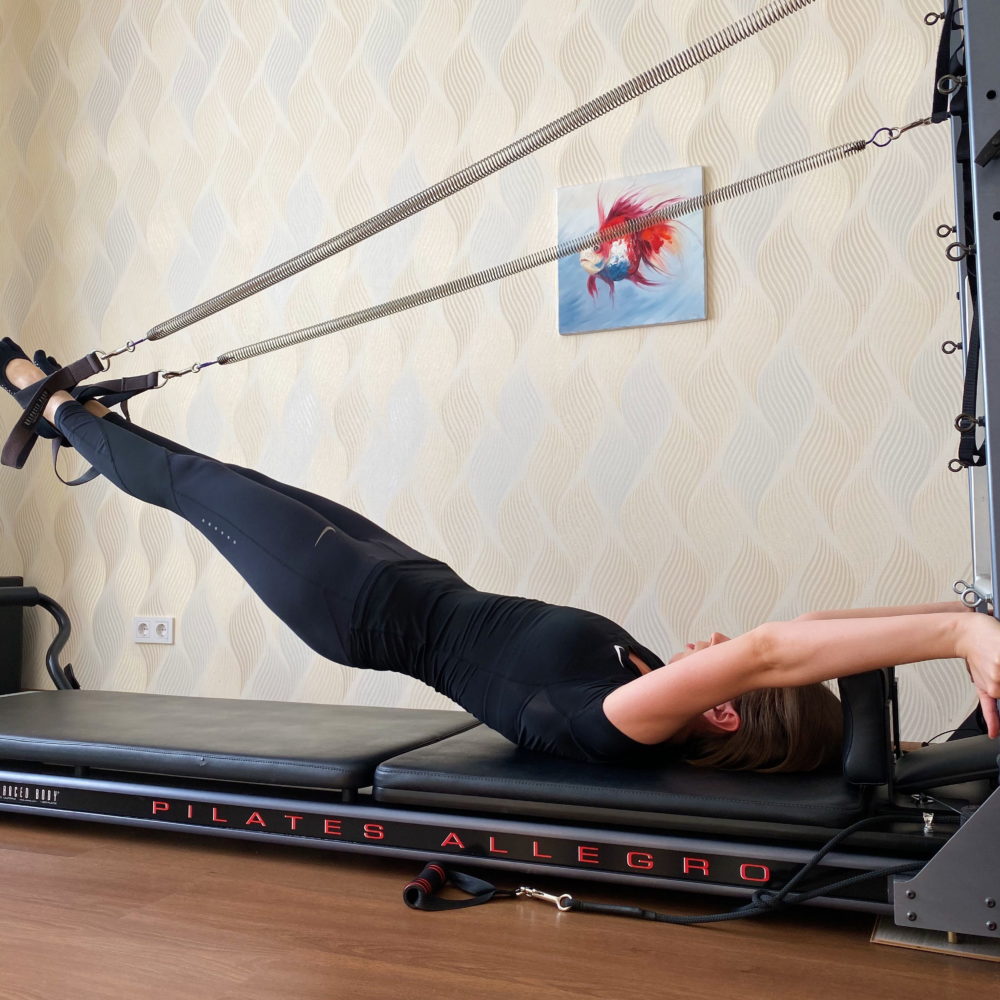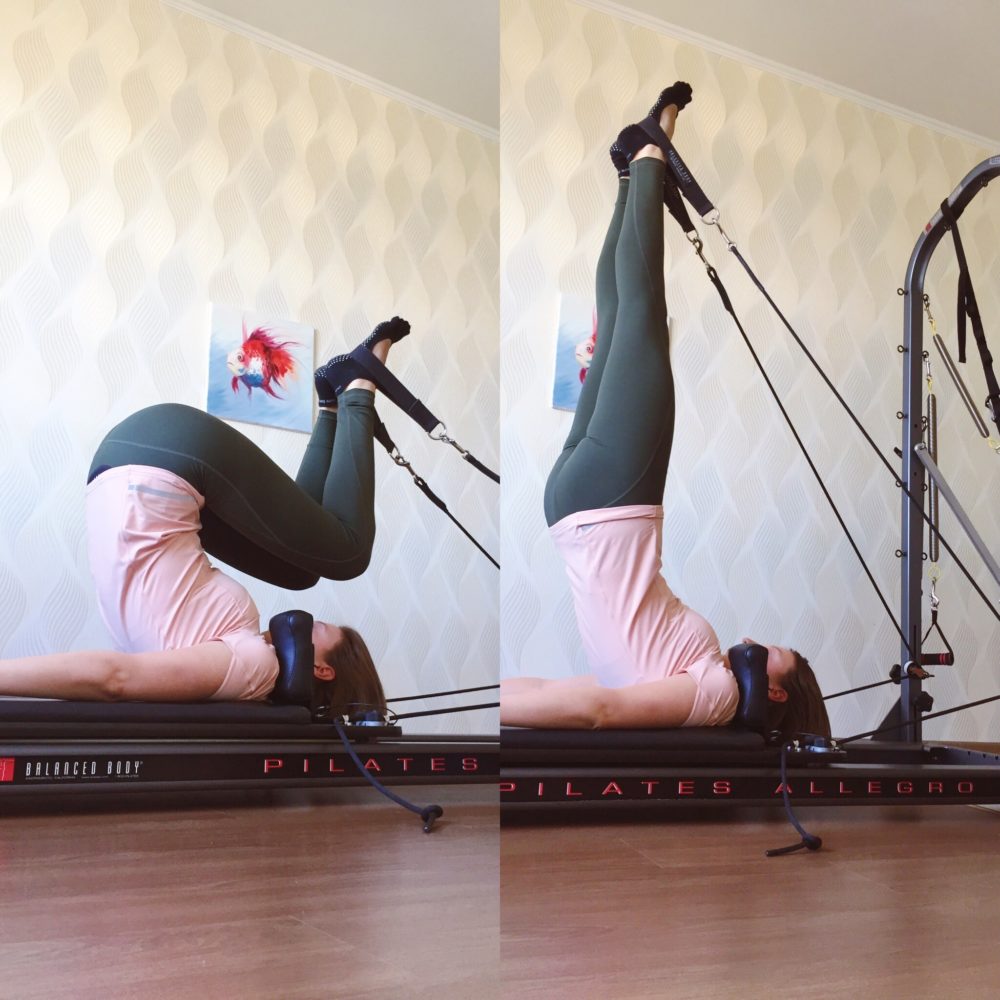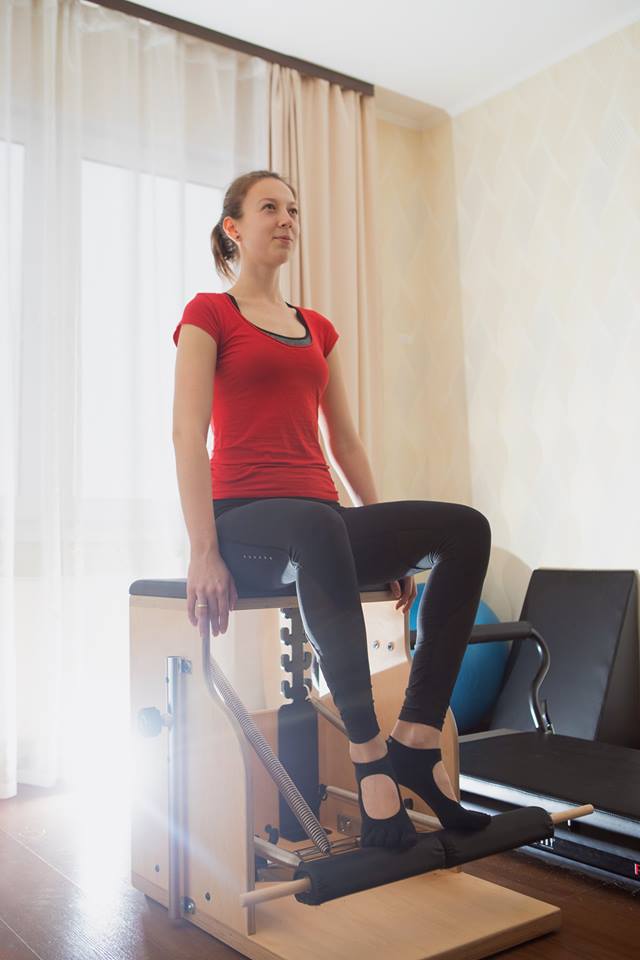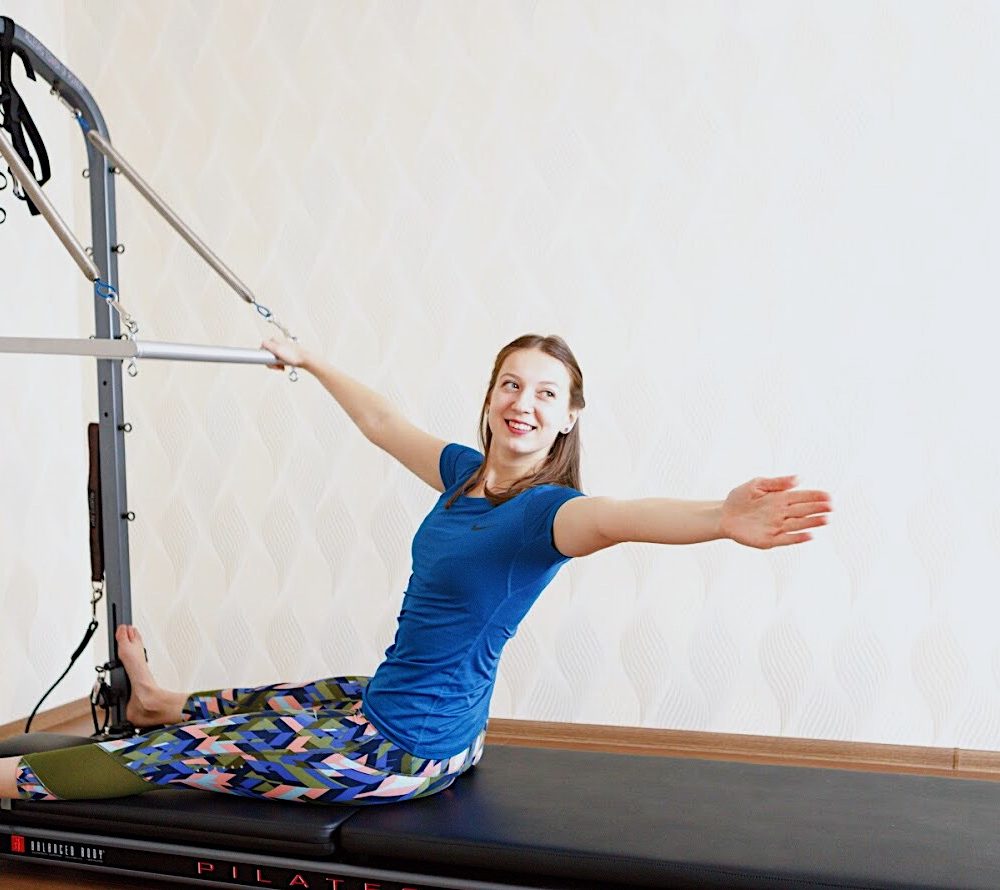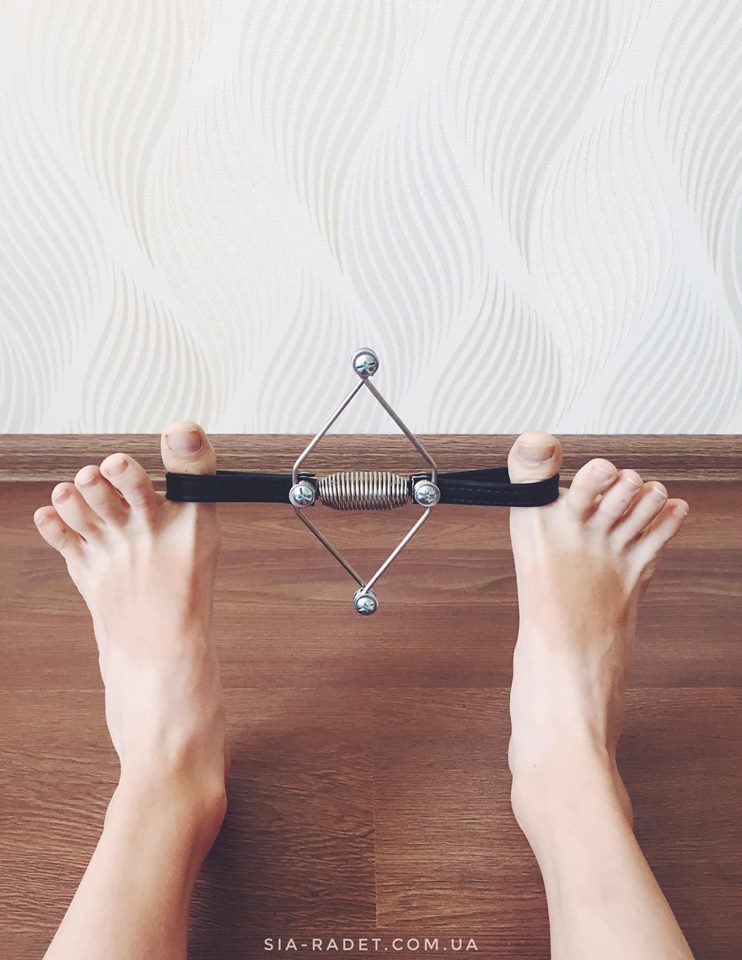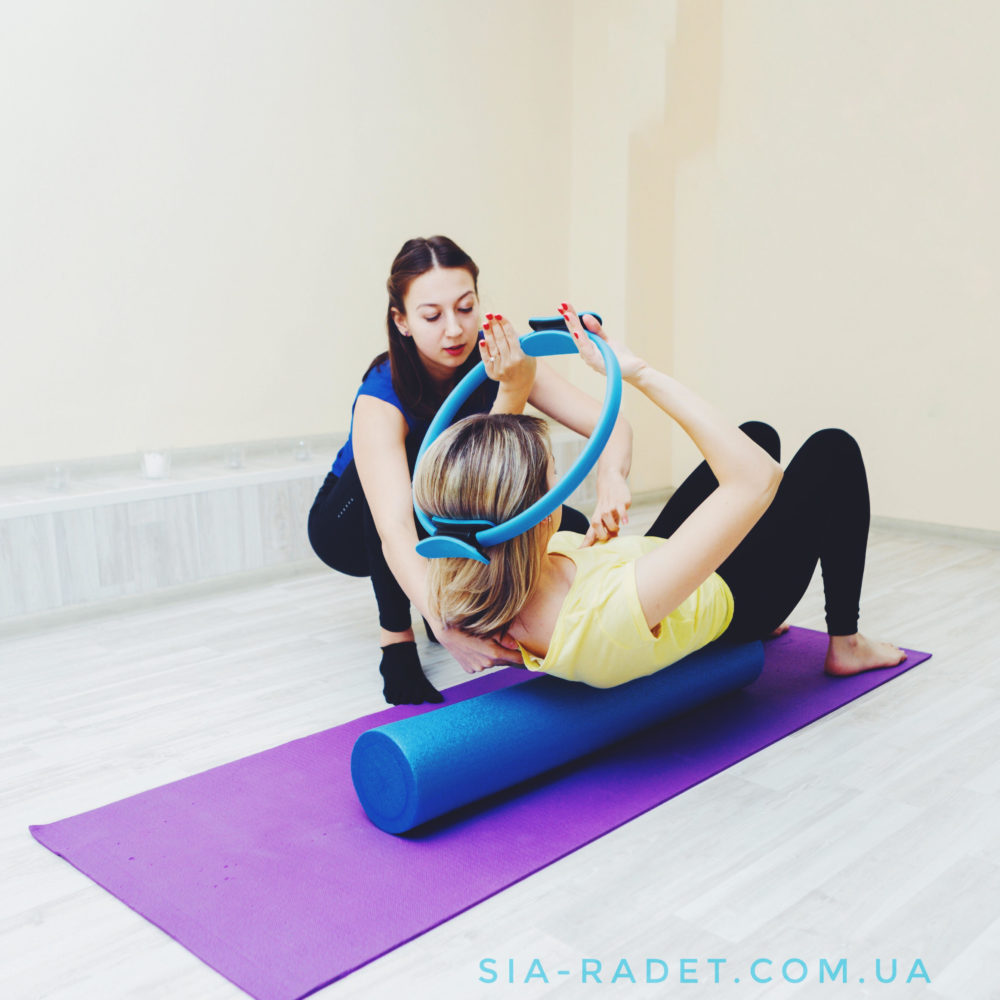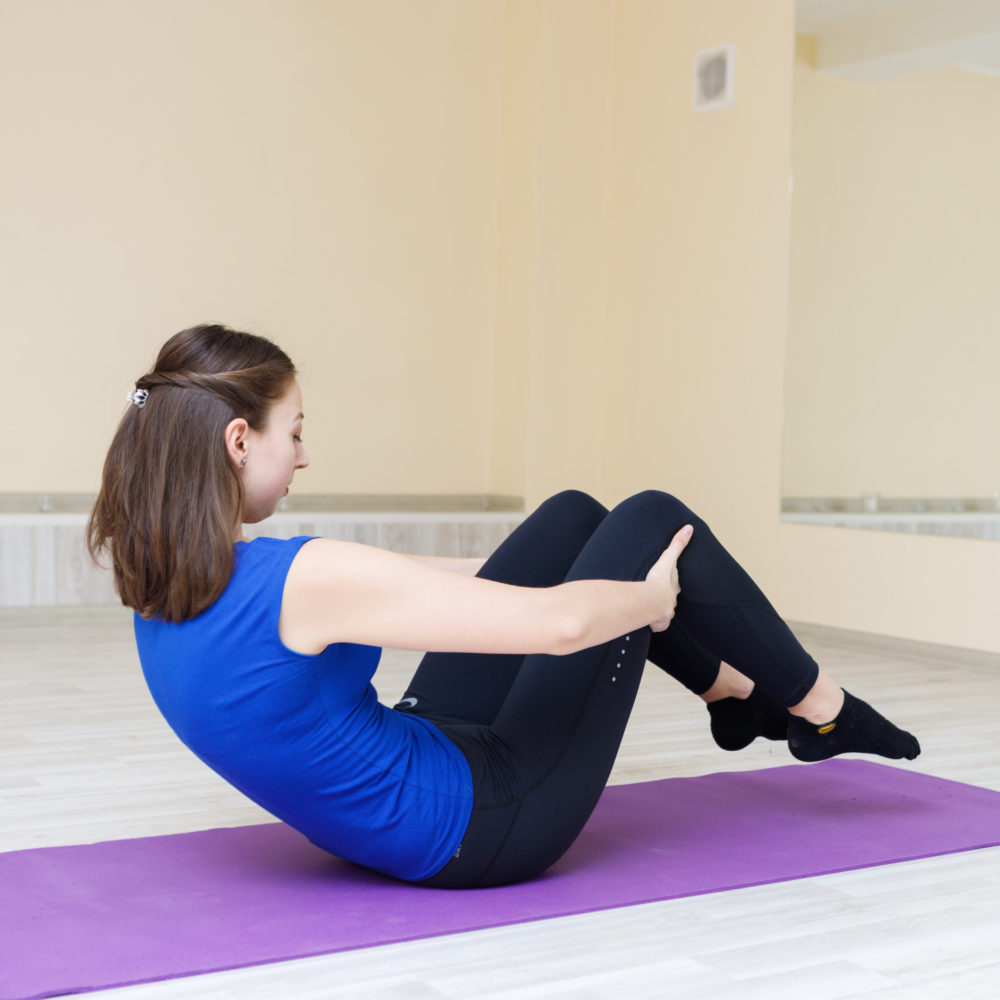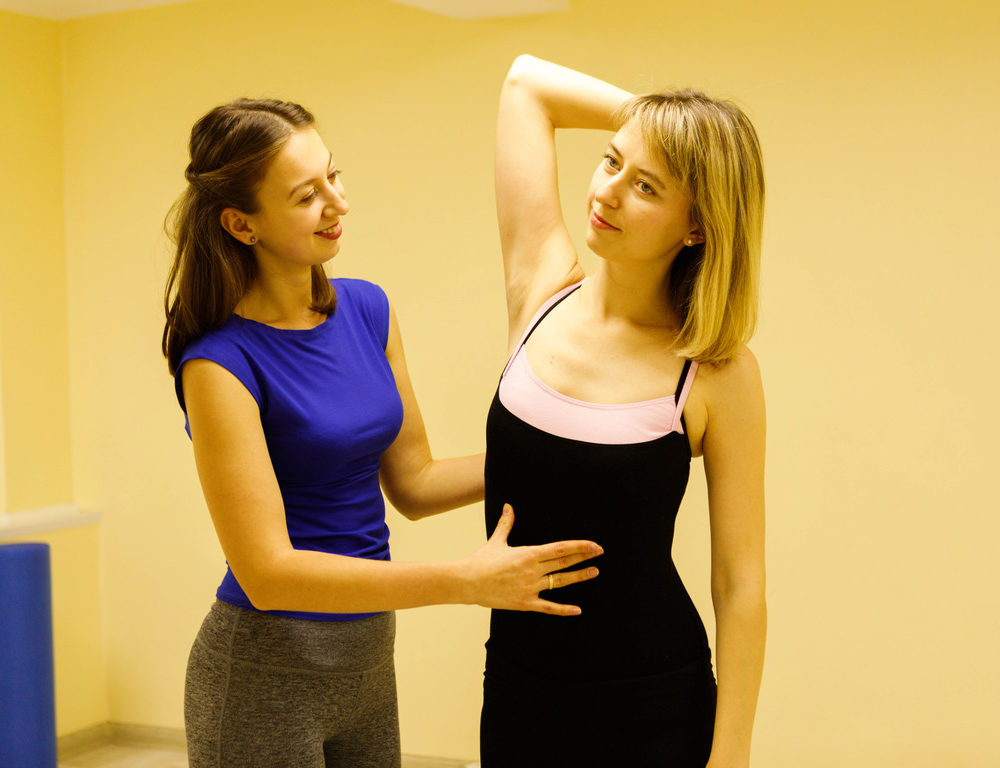Pilates after pregnancy
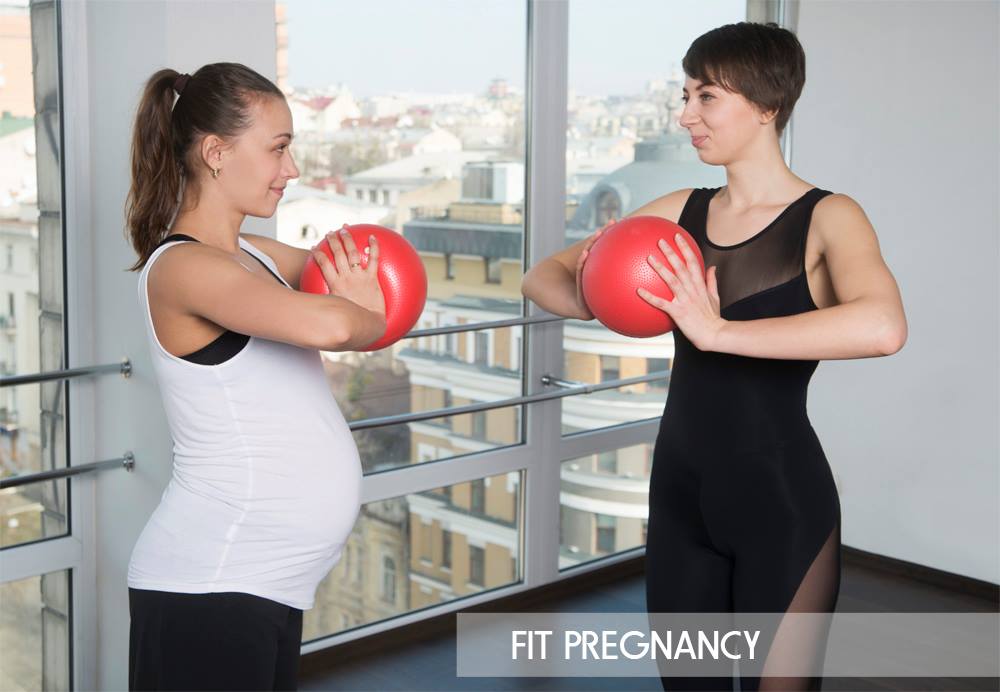
Pilates is unique method aimed to develop opposite extension, to engage deep muscles and to give the meaning what position the body occupies in space and how it should be for health.
People live under the pressure of gravity, which inevitably compresses the internal structure of the body: muscles, joints, organs, bones. Axial extension is the ability to align in two directions and to counteract gravity. To achieve results by Pilates is not enough to do matwork. You need to use Pilates equipment. These apparatus are designed to develop the ability to keep alignment. That’s why people who involved in Pilates keep a healthy posture, flexibility and strength in the body until old age.
Pregnancy significantly changes the posture of woman, changes the center of gravity, hormonal changes make body unstable: cartilaginous tissue softens, flexibility and mobility of joints and ligaments increases. And Pilates method teaches control and stability.
Women who are engaged in Pilates feel themselves better while pregnancy: less back pain, more energy, less edema, more balanced emotional state, faster recovery after giving a birth.
The ideal situation for postpartum recovery when woman was engaged in training before and during pregnancy. But in any case, the process of recovery will be different for every woman. Even if it’s a mother who has a third or fourth child. There is no pregnancy which will be the same.
The process of recovery depends on the following factors: previous experience, the process of labor, natural birth or cesarean section, the presence of ruptures, diastasis and its degree.
Today we will talk about recovery after natural birth without complications. For professional sportswomen, the plan, of course, will be different.
FIRST, EARLY PERIOD OF RECOVERY (0-6 WEEKS)
From the first day after the birth without complications, you can start pelvic floor muscles exercises. The muscles of the pelvic floor support the internal and genital organs. During pregnancy, these muscles experience additional stress, which leads to their weakness. All mothers after childbirth need to check-in with the doctor about the condition of these muscles and prove the absence of prolapse.
Technique: Imagine a diaphragm of the pelvic floor like an elevator. Take inhale in the bottom of the belly, imagine that elevator is lowered and the muscles of the pelvic floor with the lower abdomen relax. With an exhale the lift rises upwards – the muscles of the pelvic floor and the lower abdomen contract. Note that the contraction of the pelvic floor muscles is not a reduction in the sphincter of the vagina and anus. During exercise, do not squeeze the buttocks, tilt the pelvis or hold your breath. The starting position for the exercise: lying. After learning how to perform this exercise, you can also do them sitting and standing. Exercises should be always done on an empty bladder. It is recommended to perform 8-12 repetitions, 2-3 times a day.
Diaphragm-lateral breathing is a breathing exercise that is available right the first hours after childbirth. Usually we breathe into the lower anterior thoracic area more than the rest. Therefore, before starting the exercise, determine the boundaries of the ribcage. Touch the entire ribcage with your hands and look at the anatomical image of the chest. So, inhale into the chest in all directions, as if the accordion is swelling. Exhale all the air, as if unscrew a wet towel. You can perform diaphragm-lateral breathing at any time of the day.
Articular-tendon gymnastics is another element of physical activity that must be present in the woman’s recovery process from the first days after birth and up to 6 weeks. Trainer who trained pregnant you, a physiotherapist or a doctor can give you complexes of such gymnastics.
SECOND POSTNATAL PERIOD (6-12 WEEKS)
Usually, 6 weeks after giving birth, a woman gets permission from the doctor for classes. Pilates in the second postnatal period is the best way to recover. Personal Pilates training helps to reduce the uterus, strengthens the deep abdominal muscles, that were stretched during pregnancy, stimulates metabolism, normalizes the work of the intestines, sleep and appetite. Pilates collects the body and returns the woman control over her body. It is important to start practicing Pilates with a professional Pilates personal trainer. Before you start work trainer should test you for the presence of diastase. Classes with a trainer can be 2-3 times a week, the rest of the days you need to perform 5-10 minute restoring complexes. The way you will be recovering in this period will affect your health for future years.
THIRD POSTNATAL PERIOD (3-6 MONTHS)
In addition to Pilates, during this period you can add active workouts of moderate intensity. Swimming, walking and cardio on the simulators will diversify your motor activity and add energy. Women who breastfeed should avoid shock loads that can injure the mammary glands. It’s running, jumping and weight training with big weights. Also during breastfeeding, the hormone relaxin continues to be produced, the action of which relaxes muscles and ligaments. Therefore, deep stretching and the desire to sit on the twine will only contribute to the instability of the musculoskeletal system, which can lead to injuries.
The entire postpartum period is directed to recover from the inside out, and not vice versa. The main message that a woman can follow when recovering from childbirth is to listen to her body.
Do not focus on photos of girls with Instagram and set goals to make the abdomen flat two months after giving birth, and give yourself time. Your body has changed the entire pregnancy, so the recovery involves not a month or two. To protect yourself from other people’s opinions, laymen and advisers, knowledge of the basics of biomechanics and anatomy can help you. So you can critically filter incoming information and really take responsibility for your health. After all, a healthy and happy mother is harmony in the family.
Author Anastasiia Vekua – personal Pilates trainer, pre- and post-natal fitness professional. Currently participating in a two-year educational program for Pilates trainers Lolita`s Legacy.
